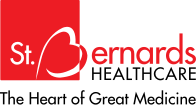Tryptophan
Tryptophan is an amino acid needed for normal growth in infants and for the production and maintenance of the body's proteins, muscles, enzymes, and neurotransmitters. It is an essential amino acid. This means your body cannot produce it, so you must get it from your diet.
Amino acid.
Amino acids are molecules that combine to form proteins. Amino acids and proteins are the building blocks of life. When proteins are digested or bro...

Function
The body uses tryptophan to help make melatonin and serotonin. Melatonin helps regulate the sleep-wake cycle, and serotonin is thought to help regulate appetite, sleep, mood, and pain.
The liver can also use tryptophan to produce niacin (vitamin B3), which is needed for energy metabolism and DNA production. In order for tryptophan in the diet to be changed into niacin, the body needs to have enough:
- Iron
- Riboflavin
- Vitamin B6
Food Sources
Tryptophan can be found in:
- Cheese
- Chicken
- Egg whites
- Fish
- Milk
- Sunflower seeds
- Peanuts
- Pumpkin seeds
- Sesame seeds
- Soy beans
- Turkey
References
Nagai R. Amino acids and proteins. In: Baynes JW, Dominiczak MH, eds. Medical Biochemistry. 6th ed. Philadelphia, PA: Elsevier; 2023:chap 2.
US Department of Agriculture and US Department of Health and Human Services. Dietary guidelines for Americans, 2020-2025. 9th edition. www.dietaryguidelines.gov/sites/default/files/2020-12/Dietary_Guidelines_for_Americans_2020-2025.pdf. Updated December 2020. Accessed May 3, 2024.
Snetselaar LG, de Jesus JM, DeSilva DM, Stoody EE. Dietary guidelines for Americans, 2020-2025: understanding the scientific process, guidelines, and key recommendations. Nutr Today. 2021;56(6):287-295. PMID: 34987271. pubmed.ncbi.nlm.nih.gov/34987271/.
-
Proteins - illustration
Protein is an important nutrient that builds muscles and bones and provides energy. Protein can help with weight control because it helps you feel full and satisfied from your meals. The healthiest proteins for weight maintenance are the leanest, meaning they have less fat and calories than other choices. The leanest protein choices are fish or shellfish, skinless chicken or turkey, low-fat or fat-free dairy (skim milk, low-fat cheese). The leanest red meat cuts are loin and tenderloin. Other healthy options are plant-based proteins.
Proteins
illustration
-
Amino acids - illustration
Amino acids are either essential, which must be supplied by food, or nonessential, which are made in the body.
Amino acids
illustration
-
Proteins - illustration
Protein is an important nutrient that builds muscles and bones and provides energy. Protein can help with weight control because it helps you feel full and satisfied from your meals. The healthiest proteins for weight maintenance are the leanest, meaning they have less fat and calories than other choices. The leanest protein choices are fish or shellfish, skinless chicken or turkey, low-fat or fat-free dairy (skim milk, low-fat cheese). The leanest red meat cuts are loin and tenderloin. Other healthy options are plant-based proteins.
Proteins
illustration
-
Amino acids - illustration
Amino acids are either essential, which must be supplied by food, or nonessential, which are made in the body.
Amino acids
illustration
Review Date: 5/4/2024
Reviewed By: Stefania Manetti, RDN, CDCES, RYT200, My Vita Sana LLC - Nourish and heal through food, San Jose, CA. Review provided by VeriMed Healthcare Network. Also reviewed by David C. Dugdale, MD, Medical Director, Brenda Conaway, Editorial Director, and the A.D.A.M. Editorial team.



